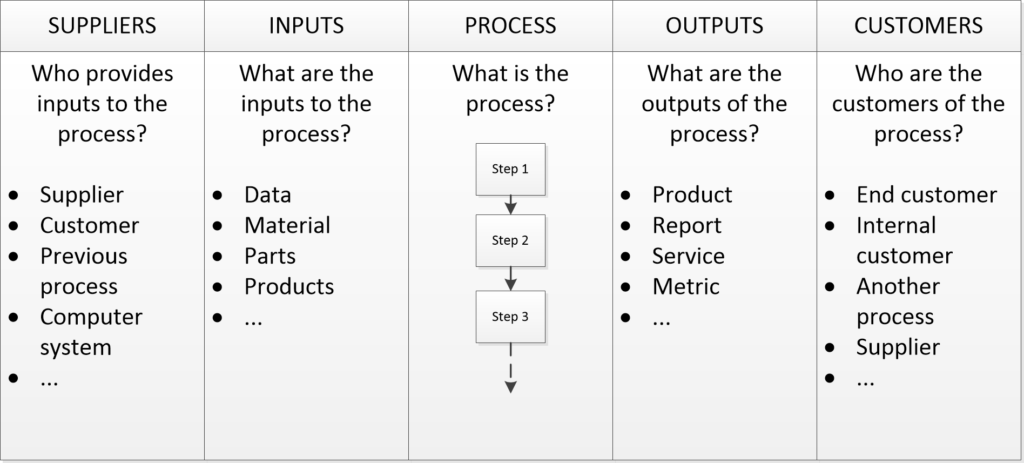Would you guess how long it takes to run a transition from ISO 9001:2008 to ISO 9001:2015 in a small size manufacturing business? Yes, you are right. It takes three months!
In this article, I will share with you how SIPOC can make you run any ISO related implementation a lot quicker and more effective.
This post will give You the framework for the successful utilisation of SIPOC in Your QMS.
What is SIPOC?
SIPOC is a visual representation of a top-level process. It is an abbreviation of words Suppliers (S), Inputs (I), Process (P), Outputs (O) and Customers (C). SIPOC has been widely associated with Six Sigma and DMAIC. However, this technique can bring benefits when it comes to process mapping for the Quality Management System.
The graphic below shows a generic SIPOC template.

What SIPOC has to do with ISO 9001?
ISO 9001 emphasises the importance of process approach and process interaction. To get this covered any reputable business has to demonstrate relevant evidence.
Today it is not enough to present a few documented procedures to satisfy auditor’s expectations. The company has to prove overall control over its activities. This would typically include:
- High-level process maps
- Interaction between processes
- Business measures
- Continuous improvement
- Control of documents
When is the right time to use SIPOC for ISO 9001?
SIPOC can be utilised at any point in time. Companies get fantastic results running process mapping during ISO 9001 implementation or transition. Review of existing processes as part of the quality management system review is also very beneficial.
SIPOC approach makes life easier for Internal Auditors.
A modern approach to auditing makes the most of process control. The smart auditor will follow the process instead of ticking off clauses from the standard.
You will score extra points with the Auditor when you present SIPOC.
The most effective approach to SIPOC
The fundamental principle behind successful implementation of SIPOC technique is to do it as the team. Say, you are conducting the supplier audit and discover that all process mapping was done by the quality manager alone. Sounds familiar? Unfortunately, there are many companies where quality management is treated as a “tick box” exercise. In these organisations quality manager’s role is to ensure that the ISO 9001 certification is not revoked.
You will impress Auditors by presenting a team approach with SIPOC
When I was leading the transition from ISO 9001:2008 to ISO 9001:2015 I focused on timescale and teamwork. Here is why:
- Timescale – if the project takes too long people will lose focus and eventually interest
- Team – why quality managers do not utilise a maximum of the company resource? More substantial support equals lower timescale for completion (providing relevant management!)
You will get results quicker by focusing on the timescale and the team.
Follow these steps and get ISO 9001 certification
You will map process, highlight issues and create an action plan with one SIPOC template.
- Run a training session for all managers on SIPOC principles (you can use this article!).
- Choose one department and lead the entire process mapping.
- Build a case study based on your process mapping. Include SIPOC populated with one process only and a powerpoint presentation showing your approach.
- Run a quick session will all managers to present the case study.
- Distribute (by email) blank SIPOC templates and the case study.
- Agree on the timescale for completion.
- Audit all SIPOCs to highlight opportunities for improvement.
- Agree on the action plan (include in the SIPOC).
- Conduct a follow-up audit.

You can download a FREE copy of SIPOC template from the PREMIUM LIBRARY.
If you have any questions or need any advice, please leave the comment below or contact me via the contact form.



24 Comments
Leave your reply.